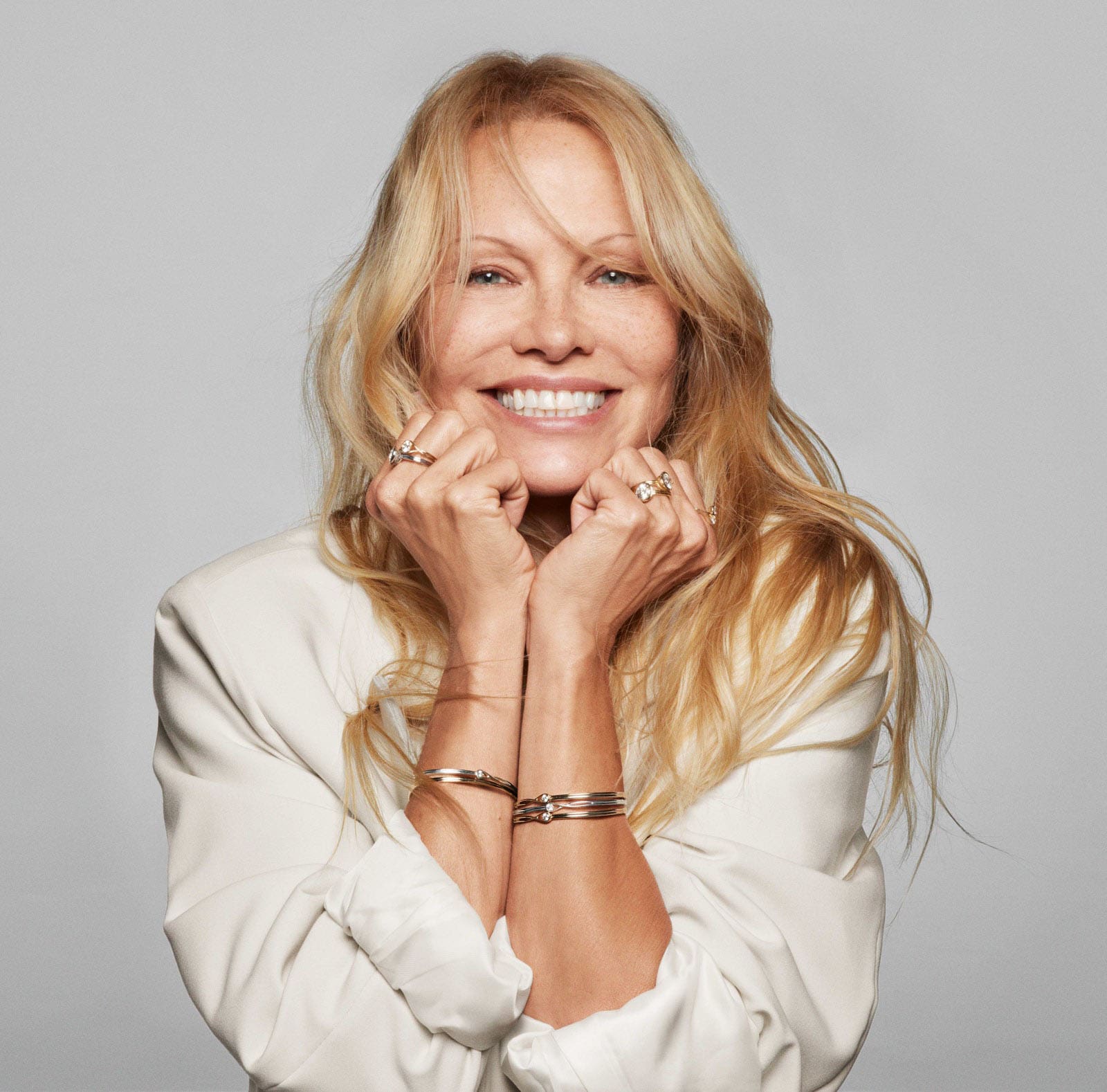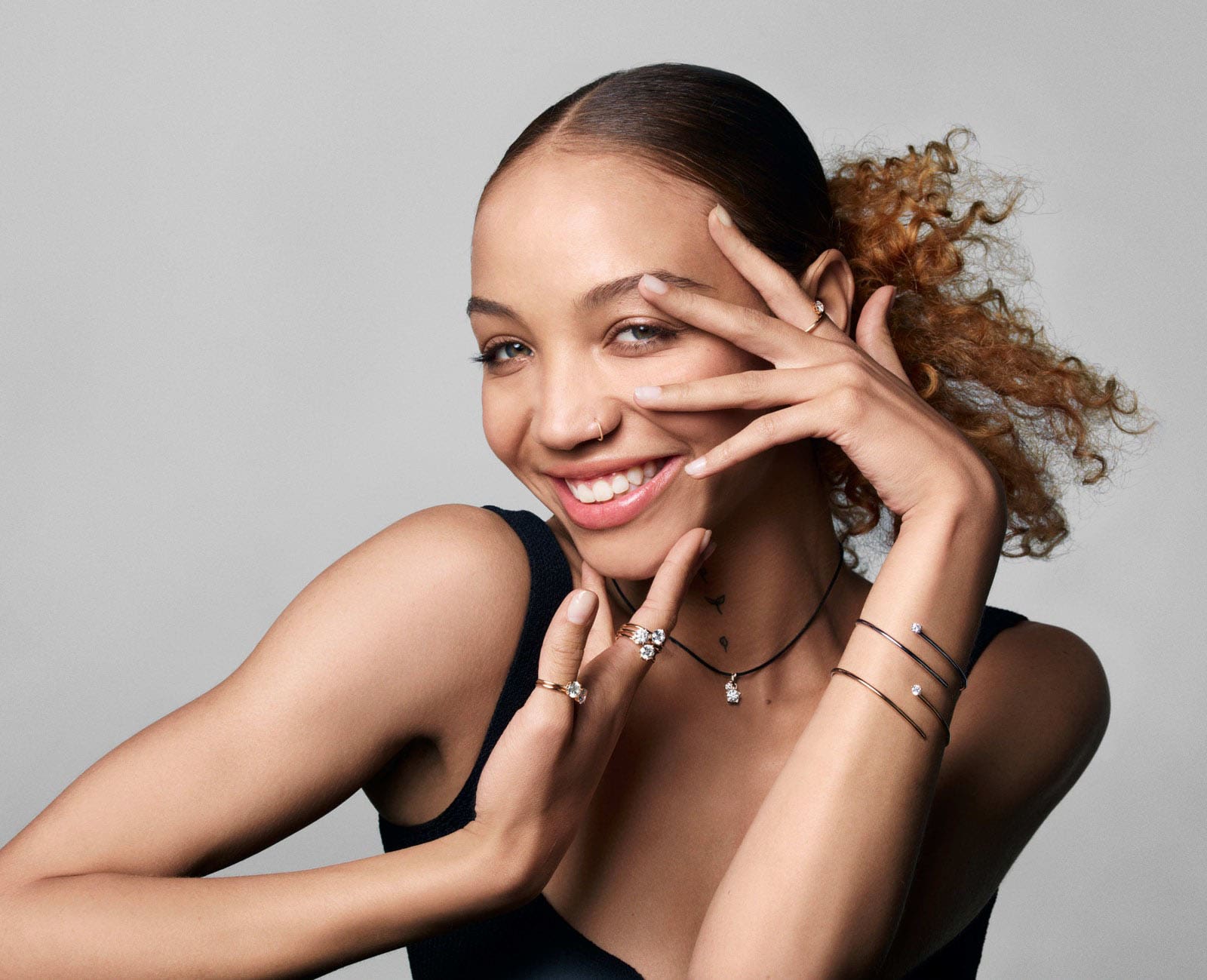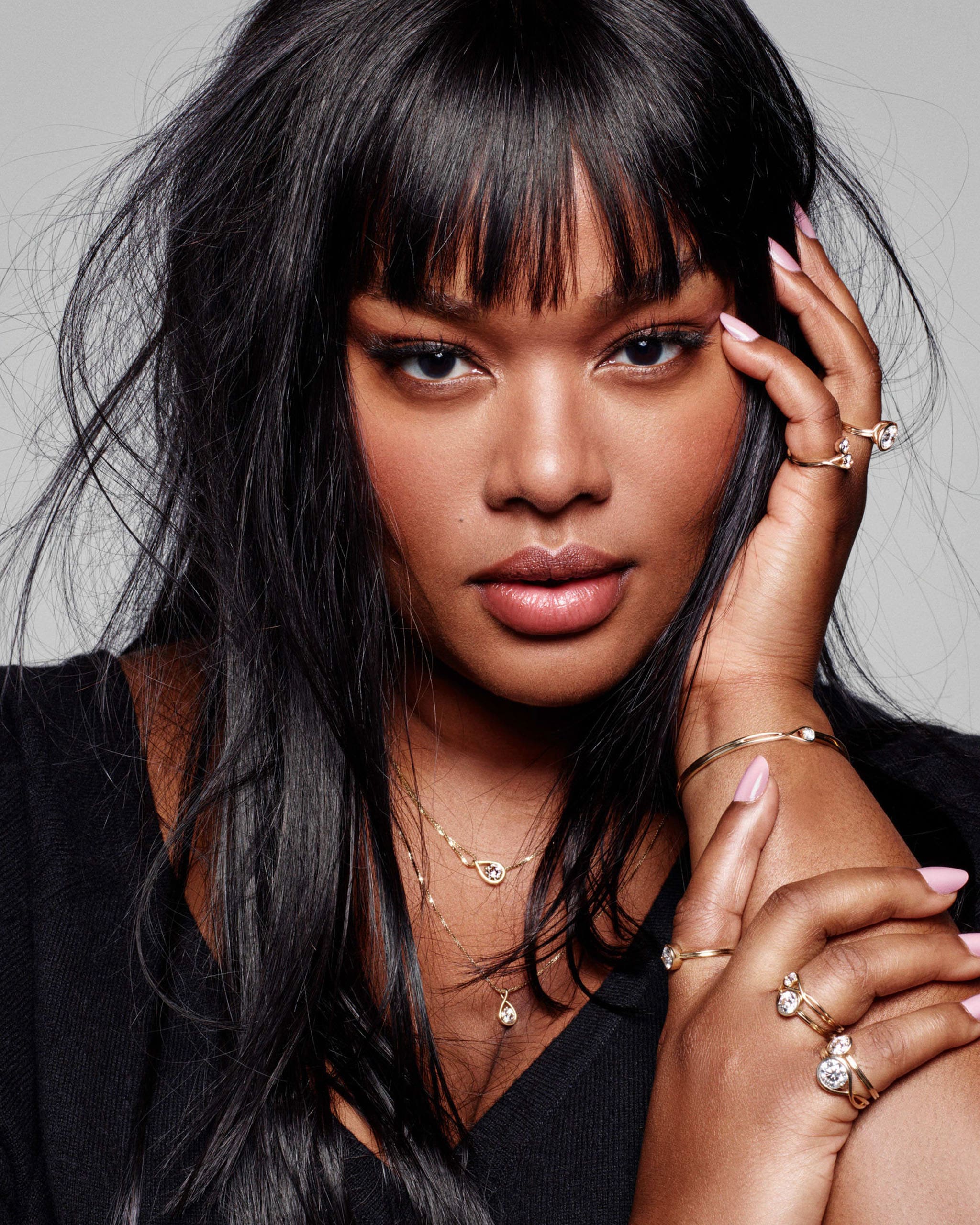Courtesy of Pandora
Lab-grown diamonds are a divisive subject in the jewellery world, with the synthetic gemstones often branded “fake” or lesser-than by those in favour of conventional mined diamonds. But in reality, man-made diamonds are identical to natural diamonds – so much so that a diamond expert wouldn’t be able to tell the difference between the two on examination.
Given that a lab-grown diamond can have a significantly lower carbon footprint compared to a mined diamond, in many ways it’s a no-brainer to choose the man-made option. “When you look at the average mined diamond compared to a lab-created diamond that we’re using, ours has five per cent of the CO2 emissions,” Mads Twomey-Madsen, Pandora’s vice president of corporate communications and sustainability, tells Vogue. “On the emissions [front], it’s a clear case – there’s no discussion.”
While a 2019 report, commissioned by the Diamond Producers Association, suggested that lab-grown diamonds could have three times the carbon footprint as mined diamonds, the data took into account emissions created by labs in China and India, where coal is still a dominant energy source. Crucially, Pandora has partnered with a supplier that uses 100 per cent renewable energy to produce its diamonds. “That changes the whole equation,” Twomey-Madsen explains.

After committing to using only lab-grown diamonds in 2021, Pandora is now launching three new collections: Pandora Nova, featuring distinctive four-prong settings; Pandora Era, which offers a fresh take on the classic bezel and prong settings; and Pandora Talisman, comprising five pendant designs inspired by the brand’s signature charm bracelets. The collections are currently available in the UK, US, Canada, and Australia, before launching in select stores in Mexico and Brazil later this year.
To mark the expansion of its lab-grown diamonds collections, Pandora has unveiled a new “Diamonds For All” campaign. Featuring the likes of Pamela Anderson, Precious Lee, Grace Coddington, Sherry Shi and Justina Miles (the sign-language interpreter who went viral during Rihanna’s Super Bowl performance earlier this year), it sends out the message that lab-grown diamonds are not only a more eco-friendly alternative, but also much more accessible – given that they are a third of the price of mined diamonds (prices start at £225 for Pandora’s lab-grown diamonds range).

“Our commitment is to make [diamonds] available to more people,” Mary Carmen Gasco-Buisson, Pandora’s chief marketing officer, says. “We want everybody to be able to wear diamonds at any time of the day, every day, if that’s what they wish. An increasing number of people are saying, ‘Wow, I can get an identical, just as beautiful, just as sparkly diamond [with the] same standards on the four Cs – colour, clarity, carat and cut – but now perhaps I can afford a bigger stone.’”
Gasco-Buisson acknowledges that there will be “some people who will want that extreme rarity and all the mystique” of a natural diamond. Indeed, surveys suggest that the majority of people still need to be convinced when it comes to lab-grown diamonds (a 2021 report found that 84 per cent of consumers still preferred natural diamonds). Meanwhile, there’s also the social factor to consider: while mining can come with an array of problems, the industry is also crucial to many local communities in countries like Botswana, Namibia and South Africa.
Still, lab-grown diamonds now make up around 10 per cent of all diamond sales, with the market set to be worth $55.5 billion (£44 billion) in 2031, more than double what it is now. With Pandora – the world’s largest jewellery brand by volume – backing lab-grown diamonds, it’s clear that they are well on their way to becoming mainstream. “Our diamonds are attracting not just new customers to Pandora, but also, a lot of people who [already] buy Pandora are buying our diamonds, which for us is very good because our intent is to democratise,” Gasco-Buisson says.

Lab-grown diamonds form just one part of Pandora’s sustainability strategy, which also includes a commitment to use 100 per cent recycled gold and silver by 2025 (all metal used in Pandora’s lab-grown diamond collections is already recycled), and to cut absolute greenhouse gas emissions by 50 per cent by 2030, compared to a 2019 baseline (the brand’s two manufacturing facilities in Thailand already operate on 100 per cent renewable energy). “[The commitment to use lab-grown diamonds] came out of this decision to be a low-carbon company,” Twomey-Madsen reiterates.
Pandora hopes it can prove that the demand for high quality lab-grown diamonds is not only there, but that other major players in the industry follow suit, too. “If we were to change all the [world’s] diamonds to lab-grown diamonds, it’s [the equivalent of] changing all the cars in New York City to electric vehicles,” Gasco-Buisson adds, referring to the six million tonnes of CO2 that would be saved annually. “That’s a major impact – I see us playing a meaningful role.”
This article was originally published on British Vogue.
